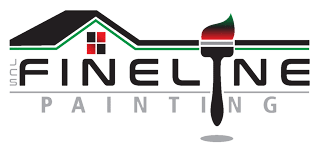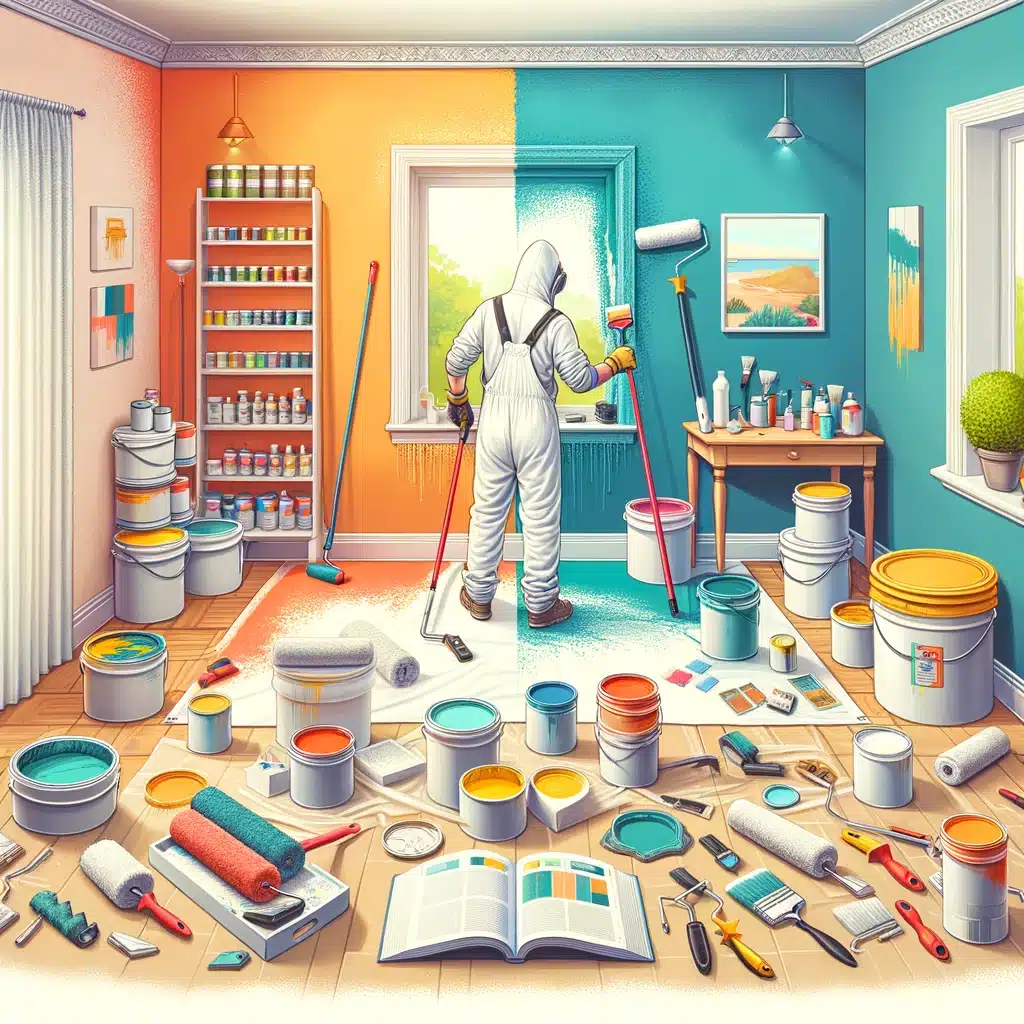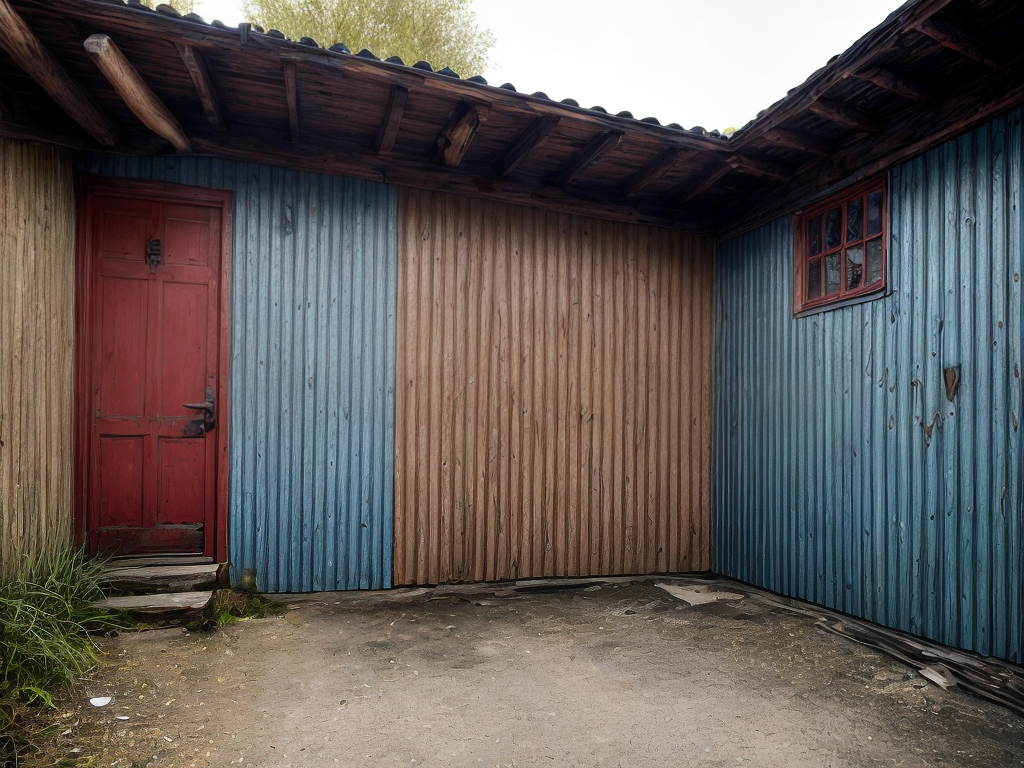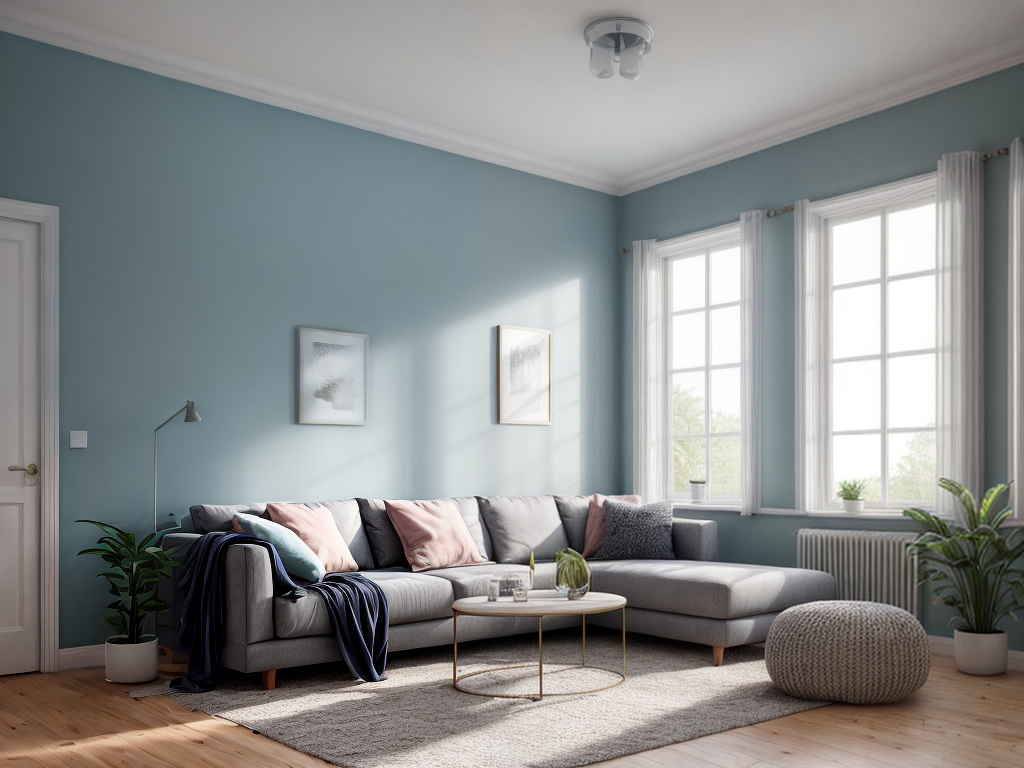Have you ever wondered if there’s a way to preserve the exterior paint on your home and protect it from the harsh elements? Well, I have some good news for you! In this guide, I’ll share some valuable tips and techniques that will help you shield your home from the damaging effects of weather and time. From choosing the right paint type to implementing proper painting techniques, we’ll cover all the essential steps to ensure your home’s exterior paint stays vibrant and protected. So, let’s dive in and discover how you can keep your home looking fresh and beautiful for years to come.
Choosing the Right Paint Type
In this article, I will guide you on choosing the right paint type to preserve the exterior of your home and protect it from the elements. When it comes to choosing the right color for your home’s exterior, it’s important to consider a few key factors. First, think about the overall style and architecture of your home. Traditional homes often look best with classic colors like whites, grays, or earth tones, while more modern or contemporary homes can handle bolder, brighter colors. It’s also a good idea to take into account the colors used on neighboring houses to ensure your home blends in nicely. Understanding paint finishes is equally important. Glossy finishes are durable and easier to clean, but they can highlight imperfections. On the other hand, matte finishes are excellent at hiding flaws but may not stand up as well to harsh weather conditions. By carefully considering both color and finish, you can select the perfect paint type to protect and enhance your home’s exterior.
Preparing the Surface for Painting
Before starting any painting project, it is crucial to prepare the surface properly. This involves using surface cleaning techniques to remove dirt, grime, and loose paint. Additionally, priming the surface before painting helps to ensure better adhesion and a longer-lasting finish. Taking the time to properly prepare the surface will result in a more professional-looking paint job and help to protect your home’s exterior from the elements.
Surface Cleaning Techniques
To effectively prepare the surface for painting, I start by implementing thorough surface cleaning techniques. Surface preparation is crucial for achieving a smooth and long-lasting paint finish. Before applying any paint, it is essential to remove dirt, grime, and loose particles from the surface. I begin by using a pressure washer to clean the exterior walls. This high-pressure water spray effectively removes dirt and other contaminants. Next, I scrub the surface with a mixture of water and mild detergent to remove any stubborn stains or grease. After rinsing off the cleaning solution, I allow the surface to dry completely before proceeding with the next steps of the painting process. Proper surface cleaning ensures better adhesion of the paint and enhances the durability of weather-resistant finishes.
Priming Before Painting
I always apply a primer to prepare the surface before painting, ensuring optimal adhesion and a long-lasting finish. Surface preparation is essential for a successful paint job, and using a primer is a crucial step in this process. The importance of primer cannot be overstated. It creates a smooth and even base for the paint to adhere to, improving its durability and longevity. A primer also helps to seal the surface, preventing moisture from seeping through and causing damage. It fills in any imperfections, such as cracks or holes, ensuring a flawless and professional-looking finish. Additionally, a primer enhances the color and coverage of the paint, allowing for a more vibrant and consistent result. So, before starting your next painting project, don’t forget to prime your surface for the best possible outcome.
Applying Primer for Enhanced Protection
When applying primer for enhanced protection, it’s important to choose a high-quality product that effectively seals and prepares the surface for paint. Primer offers numerous benefits, such as improved adhesion, increased durability, and enhanced color coverage. It creates a smooth and even surface, preventing the paint from peeling or cracking over time. To ensure proper application, start by cleaning the surface to remove any dirt, grease, or loose paint. Next, apply the primer using a brush or roller, following the instructions provided by the manufacturer. Make sure to apply the primer evenly and cover the entire surface. Allow the primer to dry completely before applying the paint. By taking the time to apply primer correctly, you can enhance the protection and longevity of your exterior paint job.
Using High-Quality Paint and Tools
When it comes to preserving the exterior paint of my home, using high-quality paint and tools is crucial. Not only does high-quality paint provide better coverage and durability, but it also helps to protect the underlying surface from weathering and damage. Investing in top-notch brushes, rollers, and other painting tools ensures a smooth and professional finish that will last for years to come.
Paint Longevity Tips
Using high-quality paint and tools is crucial for preserving the longevity of exterior paint. When it comes to paint storage, it is important to keep the cans tightly sealed and stored in a cool, dry place. Exposure to extreme temperatures or moisture can degrade the quality of the paint, leading to premature peeling and fading. Additionally, investing in weatherproofing techniques can significantly extend the life of your exterior paint. Applying a weather-resistant primer before painting creates a protective barrier against harsh elements such as rain, snow, and UV rays. Furthermore, using high-quality brushes, rollers, and sprayers ensures even application and reduces the risk of streaks and uneven coverage. By using the right tools and paint, you can ensure that your exterior paint will last for years to come.
Importance of Quality
Investing in high-quality paint and tools is crucial for preserving the longevity of exterior paint. When it comes to painting the exterior of your home, preparation is key. By using high-quality paint, you ensure that it will adhere properly to the surface, creating a durable and long-lasting finish. High-quality paint also offers better protection against the elements, such as UV rays, moisture, and extreme temperatures. Additionally, using professional-grade tools, such as brushes, rollers, and sprayers, can make a significant difference in the overall quality of the paint job. These tools are designed to provide even coverage and smooth application, resulting in a professional-looking finish. By investing in high-quality paint and tools, you not only protect your home from the elements but also enjoy the benefits of a well-maintained and aesthetically pleasing exterior.
Implementing Proper Painting Techniques
To ensure long-lasting protection for your home’s exterior, I rely on the tried-and-true method of applying paint with precision and expertise. Implementing proper painting techniques is crucial to avoid common painting mistakes and achieve a smooth finish. One of the most common mistakes is failing to adequately prepare the surface before painting. This includes cleaning, sanding, and priming the area to ensure the paint adheres properly. Another mistake to avoid is using cheap or low-quality paint, as it may not provide the desired durability and longevity. Additionally, using the wrong tools or applying too much or too little paint can result in an uneven or streaky finish. By following proper techniques, such as using high-quality paint and tools, preparing the surface thoroughly, and applying the paint evenly, you can ensure a professional-looking, smooth finish that will protect your home for years to come.
Regular Cleaning and Maintenance
I prioritize regular cleaning and maintenance to ensure the longevity and protection of the exterior paint on my home. Regular maintenance is essential in preventing damage to the paint and keeping it looking fresh and vibrant. I make it a point to regularly inspect the exterior surfaces of my home for any signs of wear and tear, such as peeling or chipping paint. When I notice any issues, I promptly address them by cleaning the surface and applying touch-up paint if necessary. Additionally, I regularly clean the exterior walls of my home using a mild detergent and water to remove dirt, dust, and other debris that can accumulate over time. By consistently taking care of my home’s exterior paint, I am able to maintain its beauty and protect it from the elements.
Adding a Protective Sealant Coat
After regularly cleaning and maintaining my home’s exterior paint, I enhance its protection by adding a protective sealant coat. Applying a protective coating offers numerous benefits, including increased resistance to UV rays, moisture, and extreme weather conditions. This additional layer acts as a barrier, preventing damage from sunlight, rain, snow, and other environmental factors. By sealing the paint, I ensure that it remains vibrant and intact for a longer period of time. When applying the sealant, I use various sealing techniques depending on the type of paint and surface. Some common techniques include brush application, spray application, or roller application. Regardless of the method, the key is to evenly apply the sealant to ensure proper coverage and protection. With a protective sealant coat, I can confidently protect my home’s exterior paint from the elements and extend its lifespan.
Conclusion
In conclusion, by following these steps to preserve the exterior paint of your home, you can effectively shield it from the elements and maintain its beauty for years to come. From choosing the right paint type to regular cleaning and maintenance, taking care of your home’s exterior will not only enhance its appearance but also protect it from damage caused by weather conditions. Don’t wait, start protecting your home today!




